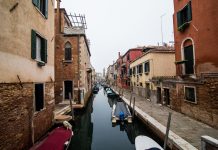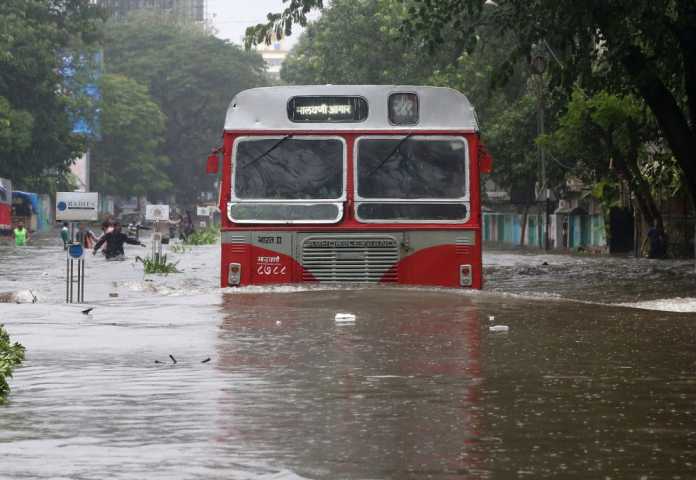At home in Mumbai and in many other parts of the country, monsoon season is a loved and feared time of the year, like any relationship in its initial romance-fueled days. A little drizzle, some long drives, a smooth playlist to listen to while sipping countless cups of tea – and it makes for stellar social media content. And like a lot of relationships after the ‘initial phase’, it turns into a storm and a whirlwind of chaos, and no one wants to be stuck in that. Here is a list of things that may help ride the high tide and flooding.
-
Weather apps
Even though our meteorological department isn’t the most accurate or reliable outlet for information, it is advisable to always check their website during monsoon season, or better yet, download a weather app right on your phone for updates. AccuWeather is one of the many options available on the app store and it lets you check the weather of the day as well as the week ahead, so you can schedule meetings and events accordingly.
-
Buy a dome umbrella
Most people will lean towards compact umbrellas that have button clasps and can be tossed right into a work bag, but in light of the recent heavy rains in Mumbai, I’d recommend that every person brings a dome umbrella with them – a large sturdy one that can double as a walking stick if the situation arises. It feels odd to even typing this out, but the recent passing of Dr. Deepak Amarapukar has reinstated in our minds that the BMC may never be able to solve the problem of uncovered manholes in Bombay, and even walking on the street can cost a life. If you do get caught in a situation where staying in the car is not an option, and you have to walk to the nearest café, be mindful of where you are walking because when there is no visibility on the streets. If you start to see a whirlpool or bubble forming in the middle of a flooded road, it’s probably an uncovered manhole. Another way to spot a manhole during a heavy downpour is particularly dark or murky water that is probably colored with pollutants, indicating an open drain nearby.
-
Insurance
Monsoon season spans a couple of months at least, depending on which state you reside in. A different type of coverage that is necessary to have in this season is insurance for any tech/valuables that you may be bringing with you to work everyday. Despite warnings from the police and other civic authorities, many people might still have to brave the rains and go to work or to a meeting. Getting caught in the rain also puts your tech at risk and laptops, mobiles, iPad’s etc are all expensive gadgets. Apart from the cost of the tech itself, the information stored on it is also valuable and having coverage for your devices can be beneficial. Check with your insurance provider if you can get coverage for the same.
-
24/7 coffee shops
If your home and place of work are far from each other, it always helps to have family or friends in the neighborhood so you can stay there while skies and roads clear. But in the event that you don’t know anyone in the area, it helps to be able to check into a hotel for the night; but if checking into a hotel room is not something your budget can allow, you can still head to any major hotel in your vicinity because most hotels will have 24 hour coffee shops that you can go to in case you are stranded.
-
Sandbags
I am not sure why this isn’t a more popular item in the hardware stores and supermarkets in India, when the need for the product is so apparent. Especially for people living in low-lying neighborhoods, or maybe in homes that are prone to water logging, sandbags can help minimize, if not, eliminate water damage. Suggested by the Red Cross Society, sandbags can be used to line up the gaps between front doors, against main gates and even in bathrooms to prevent water from seeping into other parts of the home. These bags are relatively inexpensive and definitely worth keeping in any place that is prone to waterlog.
-
Appliance use
Even after the water has receded, check with your local electrician before turning on appliances because water damage can sometimes go undetected. Especially if you have an electric stove in the kitchen or any kind of exposed wiring in the house, always double check to avoid mishaps.
-
Cars
If parking your car at an elevated zone or an indoor garage is not an option, try using grease, silicone or plastic wrap to cover the ECU and ventilation holes of the car. It takes only two feet of water for a car to float in a flood, so extra caution is never a bad thing to protect your vehicle.
-
Foods that can be cooked on a stove top
Excessive flooding often causes power cuts to avoid electrical shocks and fires, making microwaves and refrigerators useless for some time. It helps to have packaged or processed foods like instant noodles that require minimal tools and effort. Most Indian homes have gas stoves anyways, so even in a power cut, it is likely you can make a grilled cheese sandwich or tea on the stove.
-
Emergency cash
Even though debit cards and e-wallets are convenient and much easier to manage, there is always the possibility of ATMs and shops losing power, and having a little cash on hand to pay for an Uber in case your phone runs out of battery is never a bad thing.
10. Rain boots
Even though they aren’t the most aesthetically pleasing shoe, and even if it doesn’t fit as appropriate work wear I would still suggest buying rain boots at least for the commute to work – choose between a simple Chelsea boot or a weather appropriate knee-high one – whatever works for you. Floodwater can often be contaminated with sewage, garbage and whatever else is on the streets, so really it’s worth the money to invest in a pair.






































